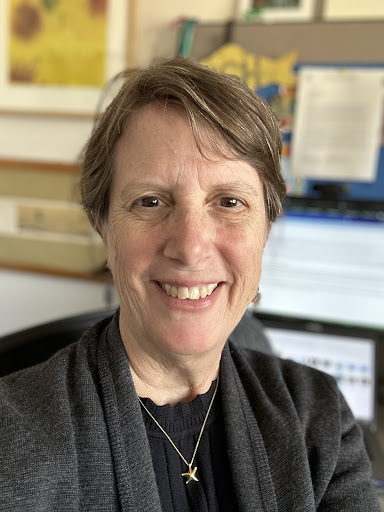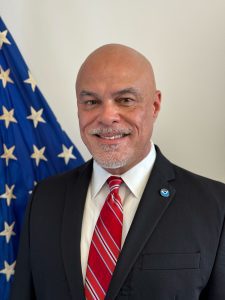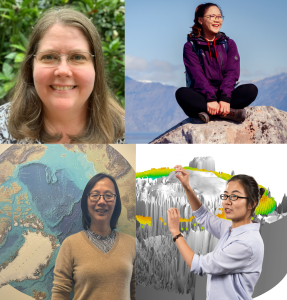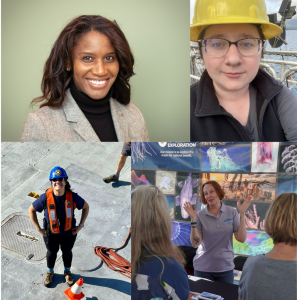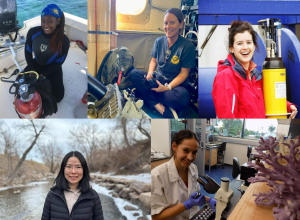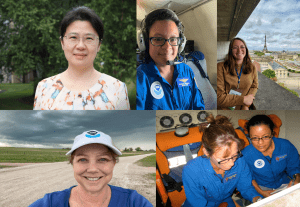To celebrate Women’s History Month, we asked women throughout NOAA Research who make lasting impacts in scientific research, leadership, and support from the field to the office to share how their work contributes to NOAA’s mission of Climate Resilience and preparing for a Climate-Ready Nation. This article highlights an interview with Libby Jewett, the Director of the Ocean Acidification Program in Silver Spring. Libby founded the Ocean Acidification Program in 2011, has grown its budget and reach, and continues to steer it in important and innovative directions.
Our conversation follows:
What does climate resilience or climate-ready nation mean to you? What would you want people to know about NOAA’s work on climate resilience?
A climate ready nation is one that doesn't accept the trajectory we are on, but rather works harder to solve the climate problem. In NOAA, we need to figure out how to enhance renewable energy and carbon dioxide removal options, without harming the oceans in the process. From an ocean acidification perspective, a climate ready nation is one in which people have essential information about how ocean acidification is playing out from local to global scales and the tools needed to adapt to its challenges.
What drew you to your current career or field?
I am an ocean scientist and an entrepreneur. The idea of creating a new program in the federal government attracted me, one that was focused on an emerging field of paramount importance. My PhD dissertation focused on the study of fouling species in the Chesapeake Bay, many of which are calcifiers (shell builders). Calcifiers like clams and oysters are particularly susceptible to ocean and coastal acidification. I worried about those species, which I had come to love.
What projects or research are you working on now, and how does your work contribute to climate resilience?
I worked hard over the past year to forge a partnership between four federal agencies: NOAA, Department of Energy, Office of Naval Research and the National Science Foundation. This collaborative effort raised funds to advance the study of marine Carbon Dioxide Removal (CDR), which is one of many tools we have for reducing carbon dioxide in the atmosphere. Carbon dioxide reduction (ie: emissions reduction, nature based solutions, carbon dioxide removal) is the most important focus for changing our climate change trajectory. Marine CDR may also be a tool for ocean acidification mitigation on local scales.
What do you enjoy most about your work?
I have really enjoyed the entrepreneurial aspects of my job. I have also REALLY enjoyed mentoring staff, interns, and students in their professional growth. Collaboration, partnership and trust are key approaches that underlie all of my efforts.
What challenges have you faced as a woman in your career/field and how have you overcome them?
When I started my current position in the Office of Ocean and Atmospheric Research (OAR) as Director of the NOAA Ocean Acidification Program, I was the only female Director in OAR leadership. As such, I battled to be included and heard in leadership circles. The situation has changed since then and I relish the companionship of other women who have had similar experiences. Overcoming is all about perseverance and not accepting the status quo – however, it can also be exhausting.
Do you have a favorite moment or accomplishment in your career?
Presenting to the Prince of Monaco was an interesting highlight. Receiving the Caraid Award from the IOOS Association was such a surprise and honor.
What gives you hope, either with regard to science, your field in NOAA, or in general?
As someone who studies climate change, it is hard to have hope. However, I also think that humans are inventive. My children both work in renewable energy development and I put my faith and hope in them to help us solve this existential crisis.
Looking back, what would you tell yourself when you were 12 years old? Or, what advice would you give to a woman who is starting her career?
I actually didn't feel limited as a girl at 12 years old. I thought I could do anything! It was more recently in my life that I realized the struggle that women have to be leaders, especially in science and business. We are limited not by our own competence, but by the larger society judging us through unreasonable stereotypes. I hope we can change that paradigm. When I see a female President of the United States, I will know we have made real progress.
Special thanks to Libby Jewett for participating in this interview for Women’s History Month at NOAA.
